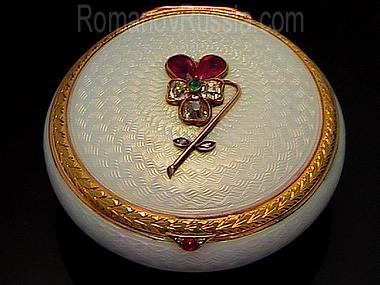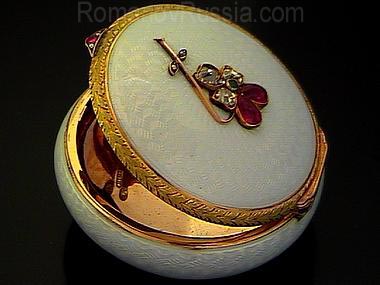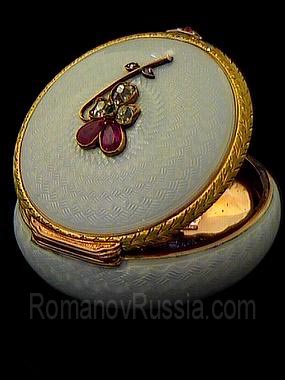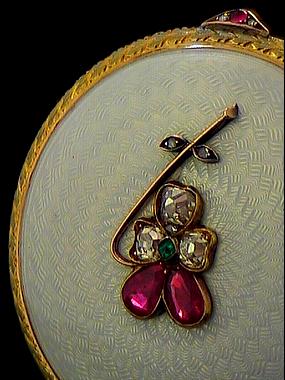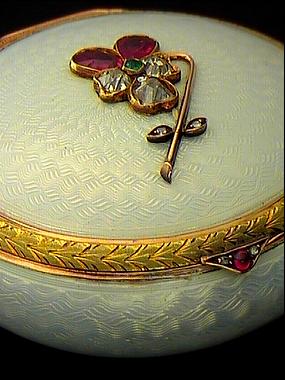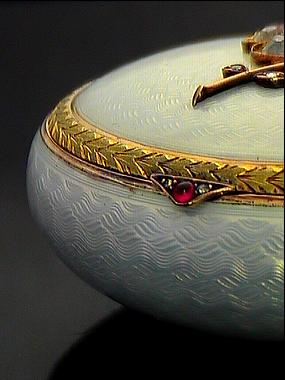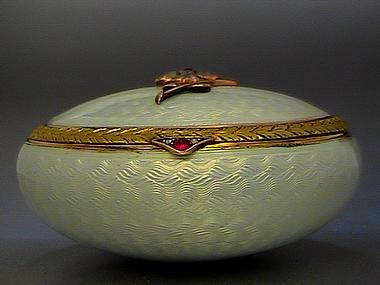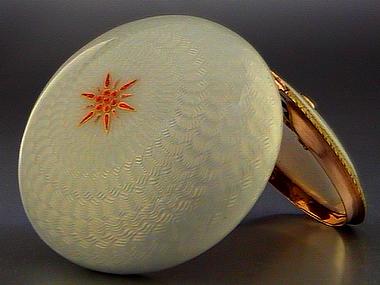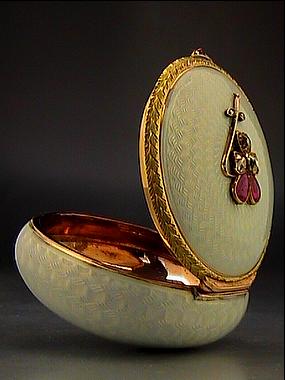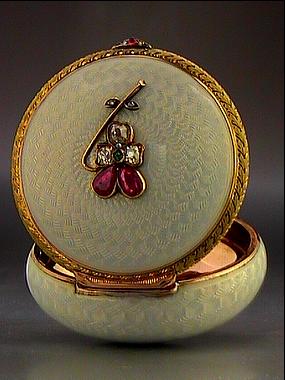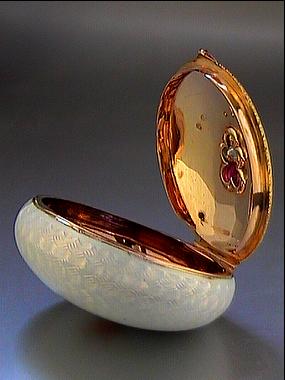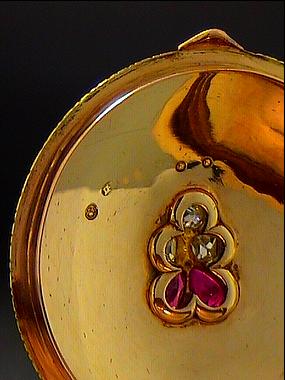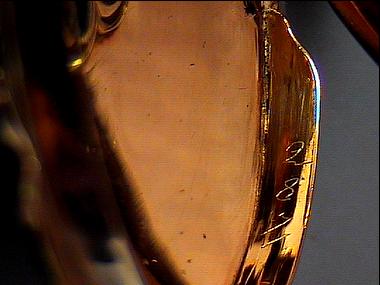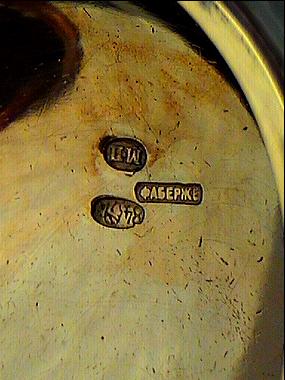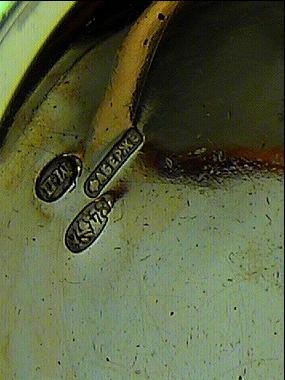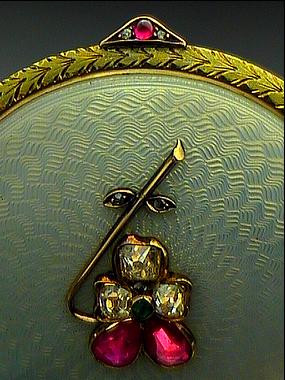made in St. Petersburg between 1899 and 1903 by Faberge’s head workmaster Michael Perchin.
Diameter 2 in. (5 cm).
Michael Evlampievich Perchin ((1860-1903), began his career at the firm of Faberge as a journeyman in the workshop of Erik Kollin, the firm’s head workmaster at the time. In 1884, he qualified as master craftsman and opened his own workshop together with 22 year old journeyman Henrik Wigstrom. The workshop produced high quality guilloché enamel objects, gold mounted carved hard stone pieces, as well as vari-color gold objects with gems. All but one, famous Faberge large Imperial Eggs made before Perchin’s death in 1903, bear the hallmark of his workshop. Michael Perchin was highly esteemed by the Firm and made a considerable fortune but had no opportunity to enjoy it. According to the memoirs of Faberge’s chief-designer Franz Birbaum (published by Valentin Skurlov), Perchin died in a mental asylum. Upon his death, the workshop was inherited by his friend and journeyman Henrik Wigstrom.
The applied gold flower on the lid is set with three brilliant and three rose-cut diamonds, an emerald and two rubies.
The thumbpiece is decorated with a cabochon ruby flanked by two rose-cut diamonds.
Precisely finished two-color gold border.
Marked on the lid with Cyrillic ‘МП’ for Michael Perchin and kokoshnik stamp with initials of St. Petersburg assayer Yakov Liapunov. Faberge’s original scratched inventory number 2871 on rim.
Stamped inside the box on the bottom with FABERGE in Cyrillic, master’s initials ‘MP’ and 84 zolotniks standard (.875 silver) with assayer’s initials of Yakov Liapunov.

